New Embry-Riddle SPACE Lab Advances Science to Improve Astronaut Health, Combat Disease on Earth
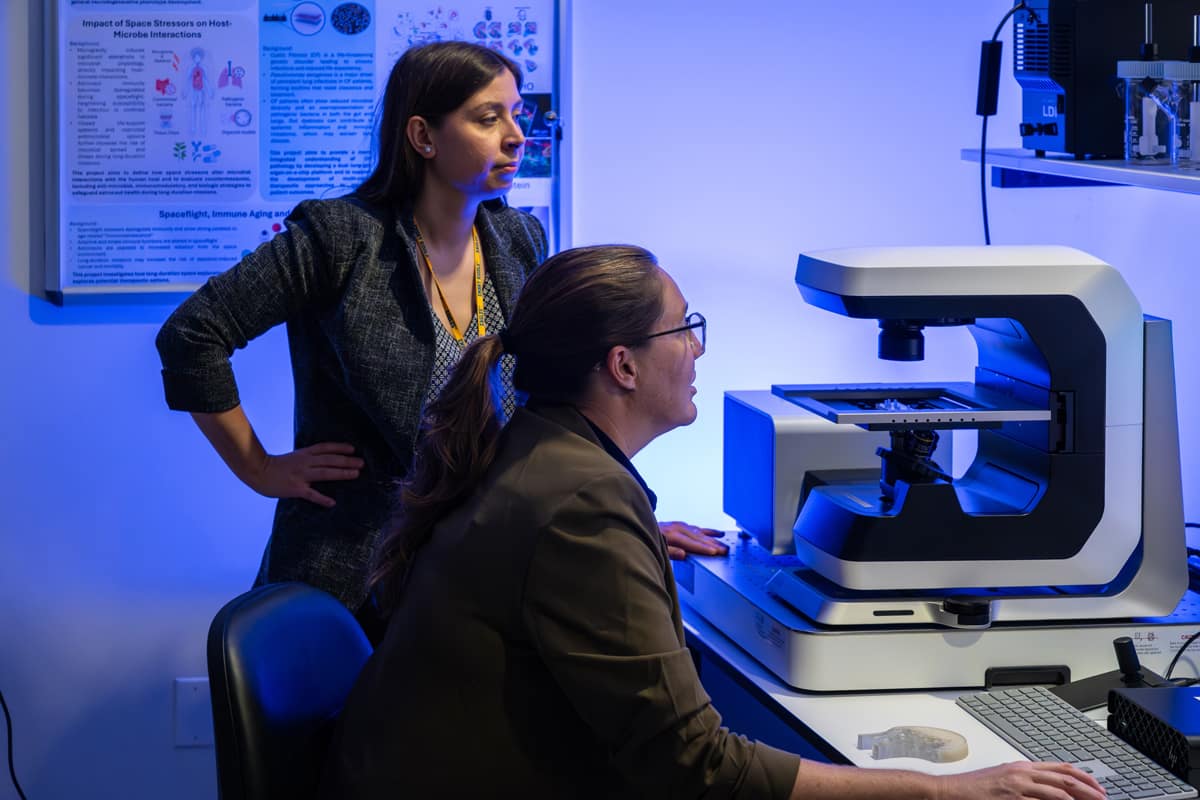
Researchers at Embry-Riddle Aeronautical University are creating “living” models using human tissue that can be experimentally subjected to the damaging conditions of spaceflight to observe how the models are affected at cellular and even molecular levels.
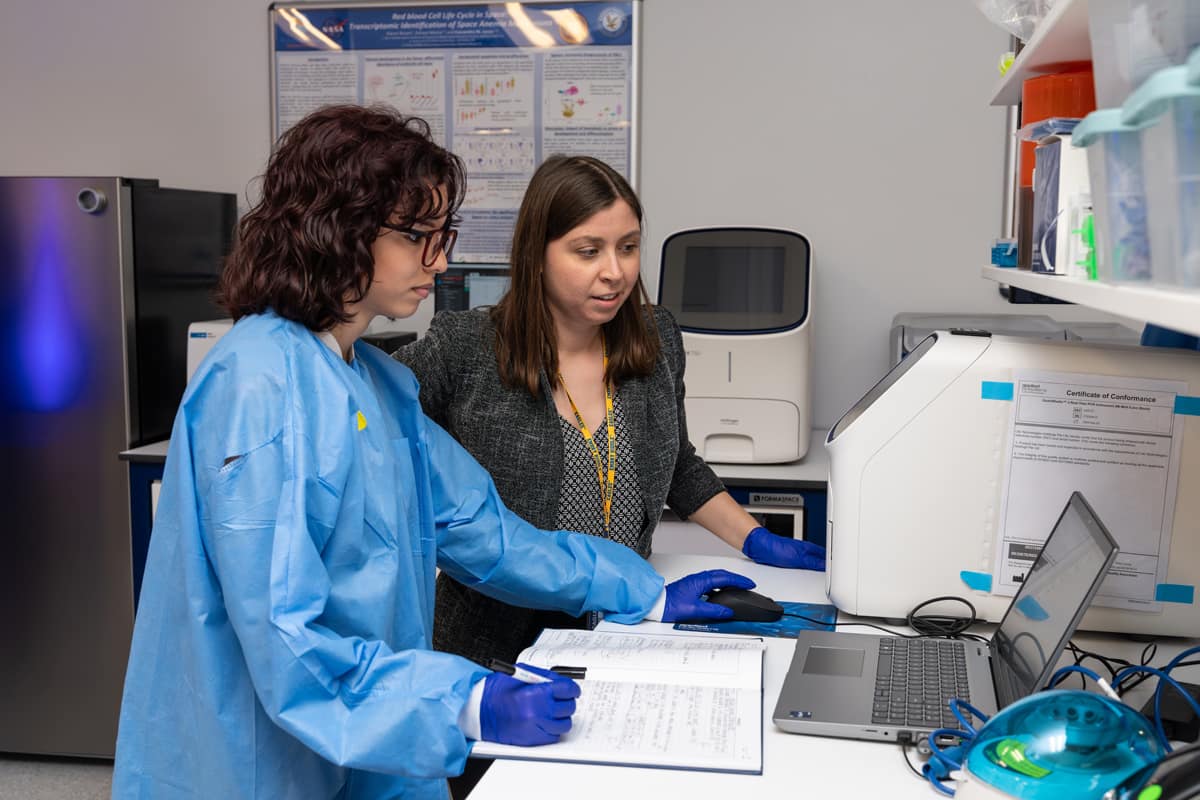
Dr. Sen Kilic discusses gene expression results with Aerospace Physiology student Valeria Jimenez, referring to her experimental notes. (Photo: Embry-Riddle/Daryl Labello)The research is intended to help create therapeutics that could mitigate the harmful health effects caused by spaceflight, or by aging and disease here on Earth.
Such bioengineering is just one of the advanced technologies made possible by Embry-Riddle’s new Space Physiology Antibody and Cellular Engineering (SPACE) Laboratory “to solve spaceflight-related health issues,” said lab co-director Dr. Cassandra Juran.
The SPACE lab, launched in Embry-Riddle’s Department of Human Factors and Behavioral Neurobiology’s Aerospace Physiology Program, is investigating ways to combat degenerative conditions such as bone loss, anemia and central nervous system degradation, as well as to fight off the increased virulence of bacteria and other microbes — all health threats associated with the low-gravity, high-radiation space environment.
Lab co-director Dr. Emel Sen Kilic said she and Juran, both assistant professors in the Human Factors and Behavioral Neurobiology Department, “aim to understand how space environment stressors affect physiological systems, and to use emerging technologies to discover countermeasures,” adding that such interventions can “address challenges both in space and here on Earth.”
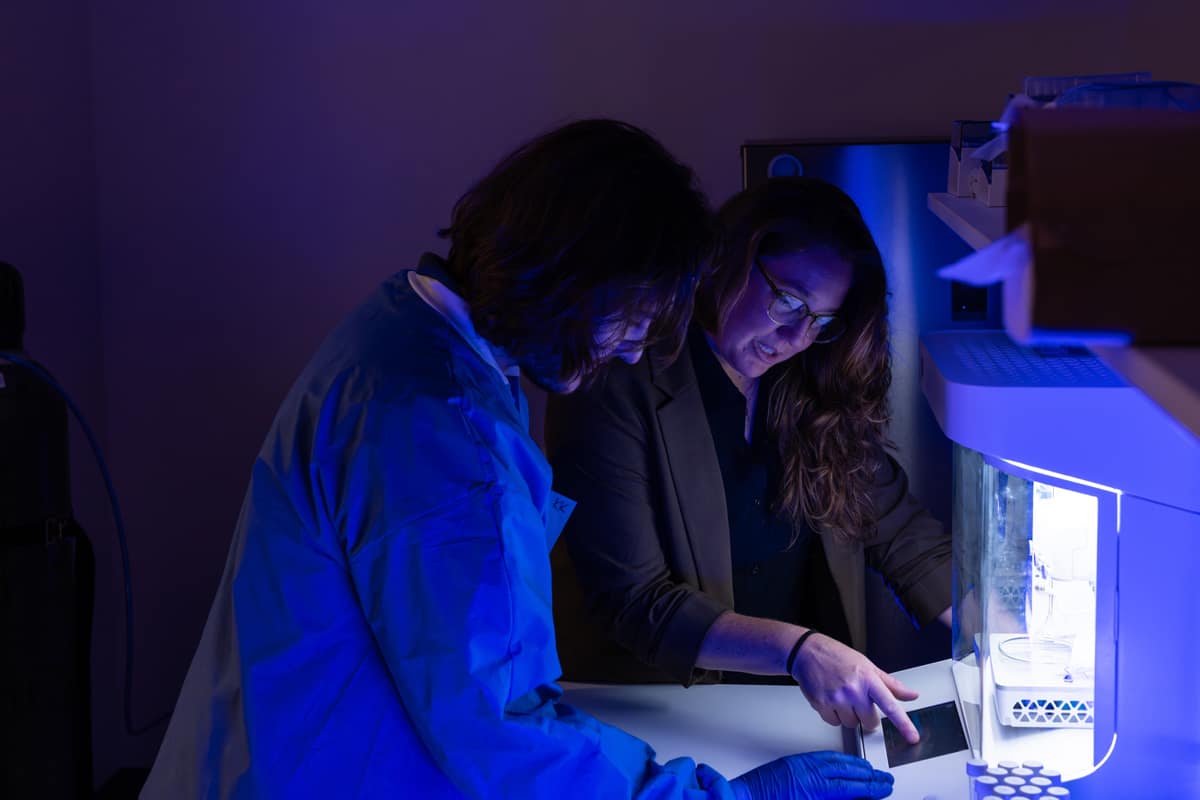
Kevin Kowalski and Dr. Juran use the CellInk BioX 3d bioprinter, which enables the lab to quickly manufacture living tissue constructs for experimentation. (Photo: Embry-Riddle/Daryl Labello)Working human models can be developed by taking human pluripotent stem cells, meaning stem cells that can form all types of human tissue, and giving them chemical “growth factors” to form specific tissues such as what is found in the brain, bone marrow or lung, Juran explained. The tissues are then incorporated into a “tissue chip,” or a miniature, engineered cell system, which allows researchers to subject the simplified model to simulated spaceflight conditions in the lab to observe its effects. Therapeutics can also be applied to these working models of human biology.
In some cases, such “living” models can be sent into space, Juran said.
“NASA, NASA’s Center for Advancement of Science in Space, and the National Science Foundation have already sent tissue chips and organoid technologies to the International Space Station,” Juran said, adding that she is a principal investigator on a NASA experiment using a brain-liver-gut model subjected to high levels of radiation that researchers hope to send to space. The model is being designed for automated operation for up to six months, a period of automation that would be necessary on the Gateway lunar space transit vehicle, which will remain unoccupied in space between transport missions.
Juran also said that Embry-Riddle’s SPACE lab “works toward supporting” NASA’s AVATAR (A Virtual Astronaut Tissue Analog Response) studies by continuing to advance tissue-chip engineering and multi-organ systems. NASA’s AVATAR mission will send “organ-on-a-chip” devices to orbit the moon on the Artemis II mission.
Customized Therapies for Astronauts
“We can evaluate potential astronaut-on-a-chip personalized medicine for an astronaut’s response to spaceflight before they go to space,” by growing pluripotent stem cells developed from an astronaut’s own cells, said Juran.
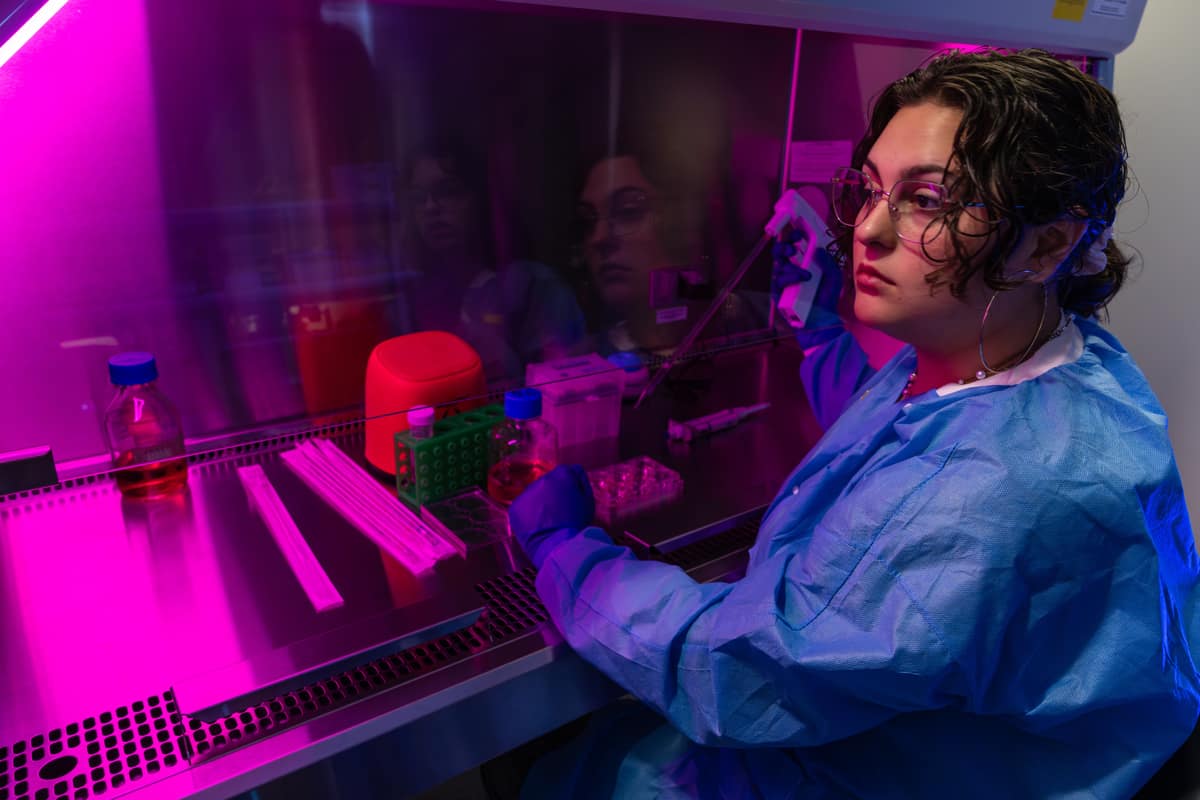
Aerospace Physiology student Mariposa Magee changes the cell culture media of lung epithelial cells in the sterile biosafety cabinet. (Photo: Embry-Riddle/Daryl Labello)
“Then we can pack the most effective medication for flight, the best dietary supplements, the best exercise regime — all preplanned before the individual astronaut ever flies,” she said.
The SPACE lab collaborates with Embry-Riddle’s Omics Lab for Health and Human Performance, which is directed by Dr. Amber Paul, also an assistant professor in the Department of Human Factors and Behavioral Neurobiology.
Paul was hired in 2021 to bring molecular research capability to Embry-Riddle’s nascent Aerospace Physiology program. The program, which was the first of its kind, is a significant broadening of Embry-Riddle’s research scope and student offerings as the aeronautical university marks its centennial anniversary.
Paul’s lab has worked with Weill Cornell Medicine and many other universities and organizations on research into what happens to tissues and organs in the space environment. One of her research projects investigated biological samples from the civilian-crewed Polaris Dawn mission, which launched in September 2024.
More recently, the Omics and SPACE labs hosted visiting researchers who processed blood samples from the FRAM-2 mission, which was the first crewed mission to orbit the Earth’s poles. Details of that research have not yet been released.
Effects on the Immune System and Skeleton
Sen Kilic’s research focuses on the impaired immunity and increased susceptibility to infectious illness that can occur in altered gravity. With the SPACE lab’s advanced capabilities, she aims to engineer antibodies designed to boost immunity and fight off infections. Her work also involves models of human physiology, in this case lung organoids, which she subjects to simulated microgravity.
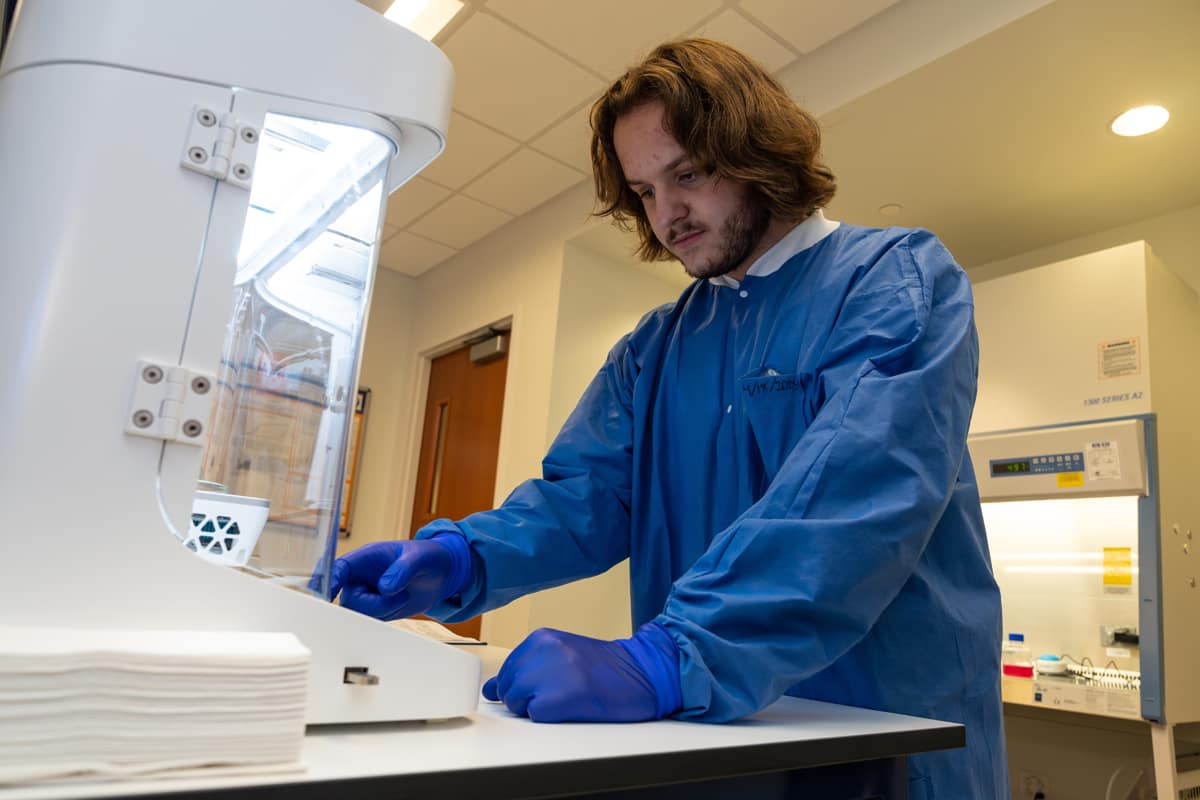
Kowalski, a sophomore in the biomedical engineering track of a Mechanical Engineering major, programs the bioprinter. (Photo: Embry-Riddle/Daryl Labello)“We’re building platforms that replicate complex lung environments to better understand how infection and immunity behave in altered gravity. I aim to identify vulnerabilities and develop targeted therapeutics,” Sen Kilic said, adding that such research will support astronaut health while also illuminating aging and immune dysfunction on Earth.
Kevin Kowalski, a sophomore in the biomedical engineering track of a Mechanical Engineering major, works in the lab “brewing” previously frozen bone cells from mice in a warmed nutrient-rich medium so they will multiply for use in experiments.
He points out that astronauts’ bones suffer hundreds of microfractures in space that, without intervention, are unable to heal in the microgravity environment. With an interest in muscle and bone regeneration biomedical equipment, Kowalski said he looks forward to working with the lab’s bioprinter, which can print live cells into bone tissue or joint replacement material.
Kowalski said he was amazed at the research that can be done in the SPACE lab, after being introduced to it in a presentation by Juran during a mechanical engineering class.
“I would have never known about any of this,” he said, “and yet it’s some of the most interesting stuff when you think about space travel.”
Kowalski said his interest in biomedical engineering came about at least partly because it is “directly impacting humans and extending people’s lives.”
Yegor Bushnev, a senior majoring in Aerospace Physiology, has planned to attend medical school since before he transferred to Embry-Riddle as a junior. Unclear early on about what he would specialize in as a doctor, he said he liked the challenge of “the plethora of problems that affect the body in space.” When he learned about Embry-Riddle’s aerospace physiology research, he knew he wanted to participate.
“Coming to Embry-Riddle solidified my love for aerospace medicine,” Bushnev said.
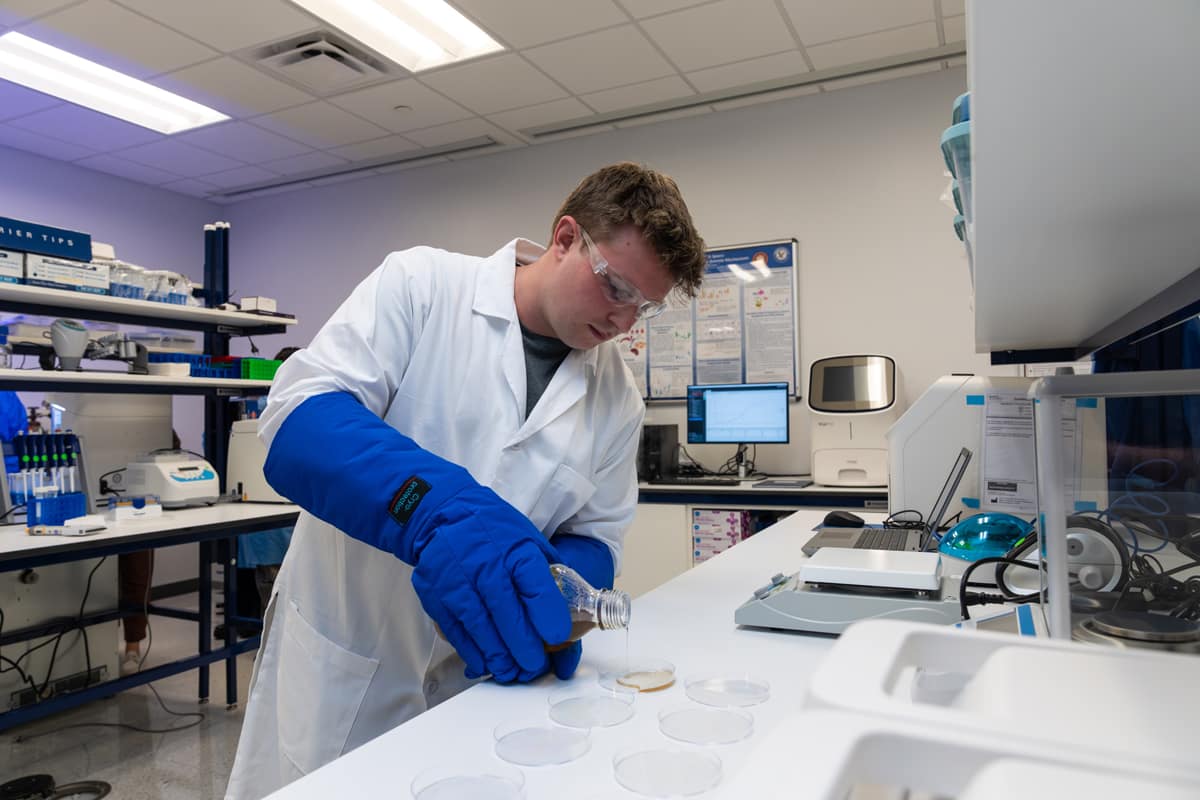
Yegor Bushnev, a senior majoring in Aerospace Physiology, prepares agar plates for growing bacteria. (Photo: Embry-Riddle/Daryl Labello)In the SPACE lab, Bushnev is experimenting with combining flavonoids with antibiotics in the hope of reducing the amount of antibiotics needed to stop bacterial infection. Flavonoids are natural, plant-derived compounds found in foods and drinks such as apples, berries, chocolate and tea, and many of the compounds have been found to have antioxidant and antibacterial properties.
“We can use them to potentially combat anti-microbial resistance,” said Bushnev.
Such a technique could be helpful in space, where bacteria can become more virulent, but also here on Earth, where drug resistance has also developed.
Bushnev said one of the requirements of the SPACE lab is that the research “can both help astronauts in space and science on Earth.”
The work Bushnev is doing allows him to learn about space medicine as an undergraduate, whereas most doctors who specialize in the field do so only after their residencies, he said.
Both Juran and Sen Kilic are proud to point out the opportunities offered through the SPACE lab to Embry-Riddle students. Juran refers to the students as “uniquely qualified” for having had a chance to link fundamental biology to aviation and aerospace fields.”
“Students learn molecular biology techniques and engage in research relevant to both spaceflight and human disease,” said Sen Kilic. “They develop interdisciplinary skills that are valuable in biotech, biomedical research and aerospace health.”

 Michaela Jarvis
Michaela Jarvis